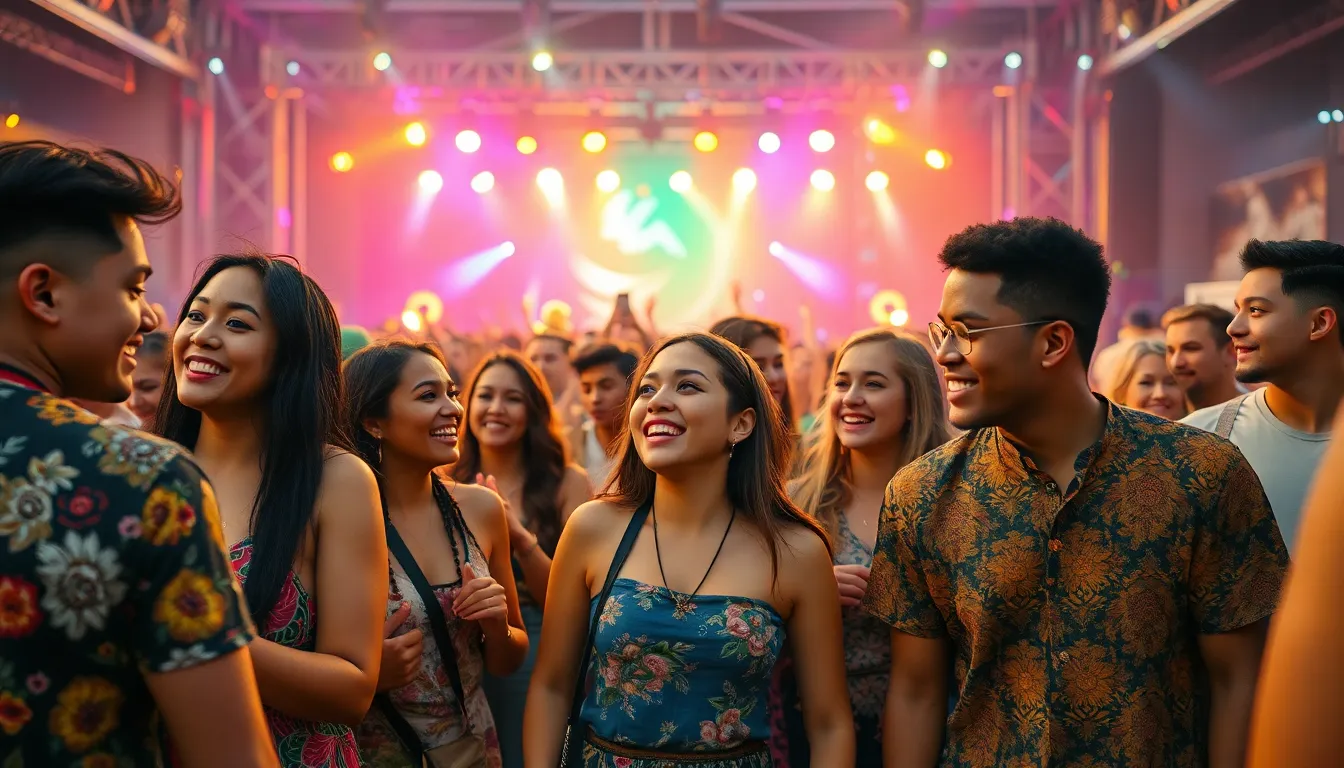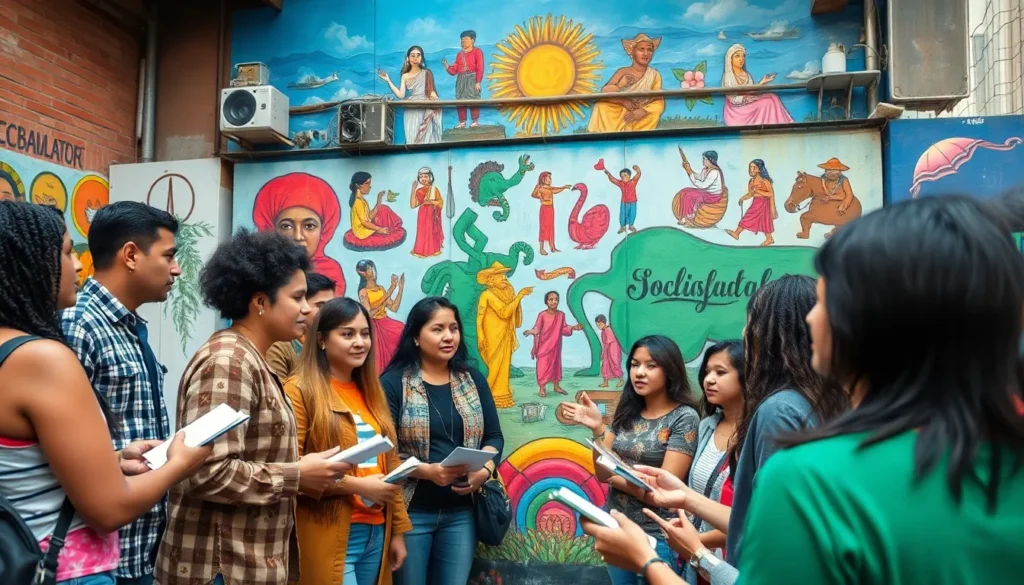Culture shapes societies, influences behaviors, and drives innovation. From art and music to traditions and social norms, cultural elements play a crucial role in defining identities and fostering connections among individuals. As globalization continues to blur geographical boundaries, understanding cultural impact becomes more essential than ever.
The ripple effects of cultural exchange can be seen in various aspects of life, including fashion, cuisine, and technology. These interactions not only enrich personal experiences but also challenge preconceived notions and promote inclusivity. By examining the nuances of cultural impact, one can appreciate the diverse tapestry that weaves humanity together, highlighting the importance of empathy and understanding in a rapidly changing world.
Table of Contents
ToggleUnderstanding Cultural Impact
Cultural impact refers to the influence that culture exerts on individuals and societies. This influence shapes identities, behaviors, and social interactions in profound ways.
Definition of Cultural Impact
Cultural impact encompasses the changes and effects that cultural expressions, systems, and ideas impose on societies. This impact manifests through art, language, beliefs, and social norms. It affects how individuals relate to one another, perceive the world, and navigate cultural differences. A strong cultural impact may enhance community cohesion, foster innovation, and inspire social movements.
Historical Context
Cultural impact has evolved throughout history, reflecting shifts in human interactions and societal structures. Ancient civilizations, such as the Greeks and Romans, contributed significantly to philosophy, art, and governance, influencing future generations. The Renaissance marked a resurgence of learning and creativity, which profoundly affected European societies. In the modern era, globalization and advancements in technology accelerated cultural exchanges, leading to hybrid identities and multicultural societies. These historical processes highlight the dynamic nature of cultural influence and its essential role in shaping contemporary social landscapes.
Areas Affected by Cultural Impact


Cultural impact influences various areas of life, shaping identities and experiences across societies. Notable sectors include art, music, and fashion, each reflecting the interconnectedness of culture and daily life.
Art and Literature
Art and literature represent profound expressions of cultural identity. They document histories and ideologies while providing commentary on societal issues. Artistic movements, such as Impressionism and Surrealism, showcase cultural shifts and responses to environments. Literary works often address themes of identity, belonging, and social justice, fostering dialogue among diverse groups. Illustrative examples include the writings of Toni Morrison, which explore African American experiences, and the paintings of Frida Kahlo, embodying personal and political dimensions.
Music and Performing Arts
Music and performing arts play crucial roles in cultural expression and communal bonding. Genres evolve through the blending of traditions, creating new forms that reflect contemporary societal values. Hip-hop, for instance, emerged as a voice for marginalized communities, addressing issues like racism and poverty. Live performances, such as theater and dance, allow audiences to engage with cultural narratives, enhancing emotional connections. Festivals celebrating diverse music genres, like Jazz Fest or Coachella, exemplify the global sharing of artistic influences.
Fashion and Lifestyle
Fashion and lifestyle choices often mirror cultural attitudes and practices. Fashion trends circulate globally, influenced by various regions and cultural movements. Designers like Alexander McQueen and Stella McCartney incorporate cultural narratives into their collections, raising awareness of sustainability and ethical production. Lifestyle shifts, driven by cultural discourse, redefine norms regarding beauty, health, and consumerism. The rise of minimalism, for example, reflects a cultural response to consumer culture, emphasizing simplicity and mindfulness in daily living.
Cultural Impact in Modern Society
Cultural impact plays a crucial role in defining identities and shaping societal interactions in contemporary life. Two significant areas of focus include globalization’s role in cultural exchange and the influence of digital media.
Globalization and Cultural Exchange
Globalization facilitates the exchange of cultural practices, ideas, and values across borders. Through increased connectivity, cultures blend, creating hybrid forms that echo in music, art, and culinary practices. For instance, fusion cuisine merges different culinary traditions, resulting in unique dishes like sushi burritos, which attract diverse audiences. Fashion trends now spread rapidly, with global brands adopting local stylistic elements to appeal to wider markets. This exchange results in enriched cultural experiences but also raises concerns about cultural appropriation and the loss of traditional practices.
Digital Media and Cultural Influence
Digital media serves as a powerful platform for cultural expression and impact. Social media platforms like Instagram and TikTok amplify voices and allow cultural narratives to reach global audiences instantly. For example, viral challenges and trends draw attention to cultural practices, often sparking conversations about identity and representation. Furthermore, streaming services provide access to diverse entertainment, enabling audiences to explore foreign films and music. This accessibility promotes cultural understanding and appreciation but can also lead to homogenization of content, where popular formats overshadow local expressions.
Measuring Cultural Impact
Measuring cultural impact involves employing various methods that capture the multifaceted nature of culture’s influence. Both quantitative and qualitative approaches provide insights into how culture shapes societies and individuals.
Quantitative Methods
Quantitative methods utilize numerical data to assess cultural impact. Researchers often employ surveys, experiments, and statistical analyses to gather measurable information. Common tools include:
- Surveys: Administered to large groups, surveys quantify cultural preferences and behaviors, revealing patterns and trends.
- Social Media Analytics: Metrics from platforms like Facebook and Twitter track engagement and reach of cultural content, providing insights into its popularity and influence.
- Content Analysis: This method evaluates cultural products (like films or books) by examining themes, genres, and audience demographics, highlighting shifts in cultural narratives over time.
These methods enable researchers to make data-driven conclusions about cultural phenomena and their societal implications.
Qualitative Approaches
Qualitative approaches provide a deeper understanding of cultural impact by exploring individual and group experiences. These methods often include:
- Interviews: Conducting in-depth conversations allows researchers to capture personal narratives and insights about cultural interactions and transformations.
- Focus Groups: Group discussions facilitate the exploration of collective attitudes and reactions to cultural events or products, emphasizing shared experiences and differing perspectives.
- Ethnographic Studies: Observational research immerses researchers in cultural settings, yielding rich, contextual insights into cultural practices and values.
These approaches enrich the understanding of culture’s influence, revealing complexities that quantitative data alone cannot capture.



